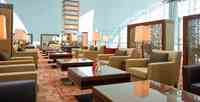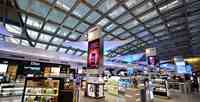
Catania Tourist Attractions
Catania Fontanarossa Airport is one of the busiest airports in Sicily and primarily serves Catania. The terminal is only 6 km away from downtown Catania.
CTA is the most crucial island of Sicily and one of the busiest in Italy. It operates with domestic and international flights to the main destinations in Europe, the Middle East, and Northern Africa.
There are numerous attractions in this metro city for visitors. Tours to the city's finest destinations will also provide unforgettable experiences for you and your companions. Catania was also an important city in Sicily during ancient civilization.
You can see the ruins of the historical palaces in the city, including Duomo Square, Ursino Castle, and many other baroque buildings. When visiting Catania, plan your trip to the old churches and architecture.
Catania's main promenade-like shopping street. Catania's main attraction is its Baroque architecture for tourists. You can also view the majestic Mt. Etna from rooftop terraces.
While passing through Catania Fontanarossa Airport, consider looking for things to do in Catania.
Visit getyourguide.com for more details.
Mount Etna: Summit Craters Guided Trekking Tour
Mount Etna, also known as Etna, is an active stratovolcano on the east coast of Sicily, Italy, between the cities of Messina and Catania.
Mount Etna encompasses 19,237 uninhabited hectares on Mount Etna's highest point on Sicily's eastern coast, becoming an iconic site.
It is the highest Mediterranean island mountain and the world's most active stratovolcano. The volcano's eruptions have been traced back 500,000 years, with at least 2,700 years of activity documented.
Mount Etna's almost continuous erupting activity has impacted geophysics, volcanology, and other Earth science theories.
Endemic flora and fauna can also be witnessed in the volcano. Its activity serves as a natural laboratory for research into ecological and biological processes.
The site's diverse and easily accessible volcanic features, including summit craters, cinder cones, lava flows, and the Valle de Bove depression, have made it a popular destination for research and education.
Depending on your level of interest, Etna Experience offers hikes along the volcano: choose from a morning tour, a sunset walk, or a full-day hiking tour. You can also walk through the Central and South Eastern Craters, stepping on ancient and recent lava flows.
Under normal conditions, the ascent to the crater rim is about 3 km and takes about 1 hour and 30 minutes.
Duomo Square, Catania: Tours and Tickets
The scene in Catania's Piazza del Duomo is characterized by a splendid circuit of Sicilian Baroque masterpieces.
The current piazza, rebuilt in 1700 on the site of an older medieval piazza, serves as the city's center in much the same way it did in the past.
It is an important gathering place for locals, tourists, and the city's main streets, which all come together at the Piazza. There's no need to get lost in Catania! The attractive Elephant fountain, built in 1736, stands in the center of the Piazza.
To the east of the square stands the magnificent Norman Cathedral, dedicated to St. Agatha, the city's patron saint and protector, and built on the ruins of a Roman spa. Its current grandeur is due, in part, to a renovation in the eighteenth century. However, the columns on the lower level are original to the ancient structure.
Take a stroll through Catania's historic center with a professional tour guide and see this beautiful city through the eyes of a local.
You will be directed by tour guides who speak both Italian and English. You can be in a small group of eight people while on tour.
Address: Via Museo Biscari, 10, 95131 Catania CT, Italy
Phone: +39 095 328 7201
Palazzo Biscari is Catania's most important private palace and valuable testimony to the Sicilian baroque era.
The charming and elegant frescoed halls provide an ideal setting for concerts, meetings, receptions, gala evenings, and fashion shows. You will have the impression that you have attended one of these prestigious events.
The Prince of Biscari, who commissioned its construction between 1707 and 1763, still owns and lives in Palazzo Biscari. The palace has one of the city's most ornate windows and door frames that you can behold.
You will love the opulent interior with a Rococo dining hall filled with mirrors, stuccoes, frescoes, and a sizeable double staircase in the inner courtyard.
You can take pictures with paintings, frescoes, marble floors, and elaborate stucco work that can be found everywhere.
The ticket price is 10 euros but only 6 euros for FAI, teachers, and students. It is free of charge for under 12 years old children.
You will be able to experience the historical site for 30 minutes.
Catania: Basilica Cattedrale Sant'Agata
Address: Piazza del Duomo, 95100 Catania CT, Italy
Phone: +39 095 320044
This historic Cathedral of Sant'Agata was built between 1086 and 1090, shortly after Catania was conquered by the Normans, on the site where Saint Agatha died a martyr's death in 251.
You will be amazed at how the three-aisled cross-shaped basilica was built using the remains of Achilles' Roman springs and other ancient structures. Under the direction of Girolamo Palazzotto during the reconstruction, the nave was also rebuilt.
It has an impressive interior designed to be Catania's pantheon. You'll notice the simple tomb of the famous opera composer Vincenzo Bellini as soon as you enter. Giovanni Battista Mazzolo also made a 1545 portal that leads from the right transept to the Norman Cappella della Madonna. It contains Roman and medieval sarcophagi containing the remains of Aragonese kings.
Behind a wrought-iron gate, the historic Cappella di Sant'Agata houses a marble triptych on the altar by 16th-century artist Antonello Freri. The richly carved 16th-century choir stalls depict Saint Agatha's life, and there are more tombs of Aragonese kings of Sicily in the choir. You will enjoy the eccentricity of the place and its historical significance.
A contemporary depiction of Mount Etna's eruption in 1669, with the lava flow that reached Castello Ursino, can be found in the sacristy. Visiting the Cathedral daily, except for religious services, is possible when entry is prohibited.
Tours of visit may vary on different days of the week. For Monday to Friday -10.45 am - 11.15 am - 11.45 am - 12.15 pm and 4:15 pm – 4:45 pm – 5:15 pm. For Saturday - 10.45 am - 11.15 am- 11.45 am - 12.15 pm and 4.15 pm – 5:00 pm.
Catania: Monastero dei Benedettini
Address: Piazza Dante Alighieri, 32, 95124 Catania CT, Italy
Phone: +39 095 710 2767
The Monastery of San Nicol l'Arena, a jewel of late Sicilian Baroque and one of Europe's largest Benedictine complexes, is only a 10-minute walk from Catania's Cathedral.
The monastic building, founded in the 16th century, became an example of architectural integration between eras characterized by numerous transformations. It has now become a Unesco world heritage site.
The DiSUM (Department of Humanities) of the University of Catania is housed here, along with a Roman Domus, abbeys, and a magnificent hanging vegetable patch.
The former monastery behind the church of San Nicol l'Arena, one of Europe's largest Benedictine monasteries, was begun in 1500. Its long-continuing construction incorporated styles from several eras. Two lovely inner courtyards and a late Baroque façade with rusticated pilasters and sculptured window decorations exist.
Both cloisters, the 16th-century cellars and Vaccarini's 18th-century cellars are available for tours. The University of Catania's Department of Humanities is housed in the monastery, a UNESCO World Heritage Site.
Catania: Villa Bellini Gardens
Address: Via Etnea, 292, 95131 Catania CT, Italy
Phone: +39 095 320761
The Bellini Garden, also known as Villa Bellini, belonged to the influential family of the Biscari princes in the eighteenth century before being donated to the citizens in 1854.
It is a large urban park with fountains and walking trails shaded by massive tropical and subtropical trees. There are numerous benches to enjoy the peace. An elaborate Belle Epoch bandstand, the Collinetta del Salvatore, and a flower clock are among the highlights.
Busts of famous Catanians line the Viale Degli Uomini Illustri. On some days, Mt. Etna is visible through the tree.
Garden enthusiasts should also visit the University of Catania's Botanic Garden (Orto Botanica), a small but well-organized garden emphasizing cactus, agave, and other succulent plants.
It is accessible from several directions in Catania, but the main entrance is on Via Etnea. The Bellini Garden, nicknamed the "labyrinth" due to its long intertwining avenues, is a botanical resource for the city. There are vast plants inside the garden, many secular or exotic.
Catania: Museo Storico dello Sbarco
Address: Piazzale Rocco Chinnici, 95129 Catania CT, Italy
Phone: +39 095 401 1929
One of the buildings that comprise the "Ciminiere" cultural center houses the "Allied Landings in Sicily Museum" (Museo Storico dello Sbarco in Sicilia 1943). The museum recounts the events in Sicily between July 10th and September 8th, 1943.
Everything that was forgotten is now preserved in this museum, which aims to safeguard our most valuable asset: peace.
The museum has three floors and a total of 3,000 square meters, including a temporary exhibition area. Using simulations, projections, and original exhibits, the museum attempted to recreate the conditions of life before, during, and after the war through reconstructed settings.
From January 1st to December 31st, regular hours are from 9:00 a.m. to 5:00 p.m.
Every Monday for the entire day and during the following holidays:
- January 1st - New Year
- 5 February - Sant'Agata
- Easter
- May 1st - Labor Day
- August 15th - Mid-August
- November 1st - All Saints
- December 25th - Christmas
The total ticket costs € 4.00. Reduced ticket costs € 2.00 for visitors over the age of 6 and under 18, as well as military and students.
It provides free tickets to tour guides and interpreters.
Catania: Parco Archeologico Greco Romano di Catania
Address: Via Vittorio Emanuele II, 266, 95124 Catania CT, Italy
Phone: +39 095 715 0508
The Roman Theater of Catania (Teatro Romano di Catania) is a site with the ruins of two open-air semicircular Ancient Roman theaters located in the center of Catania, Sicily, southern Italy, between Piazza San Francesco, via Vittorio Emanuele, via Timeo, and Teatro Greco. The site includes the larger theater and a smaller semicircular theater known as an Odeon. The structure is part of Catania's Parco Archeologico Greco-Romano.
This structure was most likely built in the second century AD but was not fully excavated until the nineteenth century. The theater's design is similar to that of many ancient Roman theaters. It is constructed with seats rising along the hillside, with spectators facing south and towards the sea.
The theater was abandoned between the fifth and sixth centuries. While archeology began in the 18th century under Ignazio Patern Castello, Prince of Biscari, the site was not cleared of houses built into the structure until 1959. Some of the marble and artifacts discovered during excavations and restorations can be seen in the nearby Casa Pandolfo and Casa Liberti.
Do not miss these old structures rich in architectural significance.

FREE Cancellations, NO card fees!

Value Options View Offers
Useful Information about Catania Airport

See all the airport lounges, locations and opening times available at Catania Airport
View...
See all bars and restaurants at Catania Airport, including locations and if they are before or after check-in
View...
See all shops available at Catania Airport - plan your duty free shopping in advance
View...